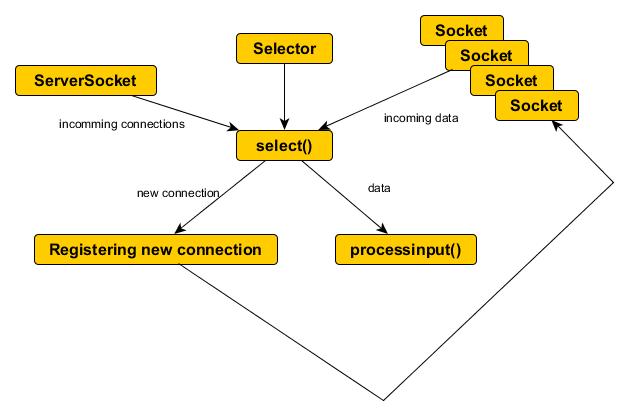tanszek:oktatas:iss_t:integration_based_on_tcp_ip_sockets
This is an old revision of the document!
Table of Contents
Socket communication
The client sends requests to the server over a TCP socket connection, and the server responds to these requests. Here are the basic steps involved in integrating software systems or components using TCP socket communication:
- Select a protocol: TCP/IP is a common protocol for socket communication, but other protocols like UDP can also be used depending on the requirements.
- Determine the message format: Decide on the format of the messages that will be exchanged between the client and server. This could be a simple text-based format or a more complex binary format.
- Define the communication interface: Define the functions or APIs that will be used for communication between the client and server.
- Create the server: Write the code for the server that listens for incoming client connections and handles incoming requests.
- Create the client: Write the code for the client that connects to the server and sends requests.
- Handle errors: Implement error handling mechanisms to ensure that communication errors are handled gracefully and do not cause the system to crash or become unstable.
- Test and iterate: Test the system thoroughly and make any necessary changes or improvements to ensure that it is functioning correctly.
Features:
- Socket ::= IP address + (TCP/UPD) port number. A Socket is a combination of ip address and port number.
- TCP Sockets provides 'real-time' data transfer
- binary data transfer but can be normal text or JSON, XML as well
- no direct method sharing (can be implemented by hand)
- TCP and UDP connections are possible. UDP is min 3 times quicker but one-way communication
- Persistent or On-Demand communication channel
- because of connection time-loss usually persistent channels are better, but periodically 'ping' messages should be sent. (in order to avoid connection closing). In case of any problems reconnection is possible
- in case of UDP channels an extra TCP channel is available for synchronizing - in online games
- Results in the fastest possible transmission:
- Where the number of transactions per second up to ~ 50 transactions, there should have been applied. (20ms / sec transfer)
Blocking and non-blocking TCP sockets in Java
Reading:
Non-blocking loop
ServerSocketChannel serverSocketChannel = ServerSocketChannel.open(); serverSocketChannel.socket().bind(new InetSocketAddress(9999)); serverSocketChannel.configureBlocking(false); // ez a sor jelzi a blokkolásmentes működést while(true){ SocketChannel socketChannel = serverSocketChannel.accept(); if(socketChannel != null){ // the connection is accepted } }
Java example for Blocking and Non-Blocking Socket
Exercise 1.
Create a simplified FTP (file transport) client and blocking server where the client can send or download text files from the server:
General use-cases
- ) Client connects to the server and sends a 'file listing' message
- ) Server sends back the list of the downloadable files
- ) Client lists the files and asks the user what action they want to take? Upload or download? ('u' or 'd')
- ) In both cases users must give the full file name with extension
- ) The client sends the selected file to the server (upload) or downloads the selected file from the server to a specific directory.
Server viewpoint
- ) After connecting, it reads the files from the /store subdirectory and sends the file names to the client after receiving the listing message.
- ) We are waiting for the client's 'u' or 'd' operation
- ) We get a filename from the client and if the action is 'd' (download), we read the file content and return its contents
- ) If the operation is 'u' (upload), we open a new file with the specified name and wait for the data to be written to the file.
Client viewpoint
- ) The client connects and waits for the list of files coming back and writes it to the console
- ) We ask for the “u” or “d” key
- ) Then we'll ask for the file-name as well.
- ) The client reads the files from the /files folder, or creates the downloaded file here
- ) If you press “d”, it creates /files/ and writes data from the server
- ) If you press “u”, /files/ is sent to the server
Exercise 2. Modify the non-blocking code so that you can transfer a burned-in name and existing text or image file larger than 2 kbytes and verify that it was successfully sent.
tanszek/oktatas/iss_t/integration_based_on_tcp_ip_sockets.1678089063.txt.gz · Last modified: 2023/03/06 07:51 by knehez


